Ginger is a wonderful root that is packed with nutrients and has a lot of medicinal uses. The popularity of ginger can make you buy more than you need, and you’d need to store the rest. After storing ginger for a while, how can you tell if it is bad?
You can tell that ginger is bad by examining it, especially its look and texture. Bad ginger will have mold growing on it and it will feel very dry to the touch. You should also see new plants growing from the buds of bad ginger.
What does bad ginger look like inside? How can you store ginger? Continue reading to find out.
Table of Contents
How to Tell if Ginger Is Bad
Here are the best ways to tell that your ginger is bad:
1. Presence of Mold

Mold grows on ginger because there are fungi growing in the ginger root. This means that when you see mold on your ginger, you should dispose of it because it is already bad. Dispose of the whole root and do not cut off the part with mold because there are fungi everywhere (inside).
2. Loss of Weight and Moisture
One way to tell that your ginger root is bad is by examining its skin and weight. The skin will look and feel wrinkly, and the entire root will feel lighter. This is because it has lost moisture. Aside from the loss of weight and moisture, you should also see mold on it, especially in sliced parts.
3. It Attracts Flying and Crawling Insects
As soon as you see a lot of insects flying or crawling around your ginger, you should know that your ginger is bad.
Fresh ginger should repel insects, so insects can only be comfortable around ginger when it has lost its essential properties.
You can peel off the skin and cut the edges to see if it is still fresh inside (i.e. if there is no mold yet).
4. Discoloration
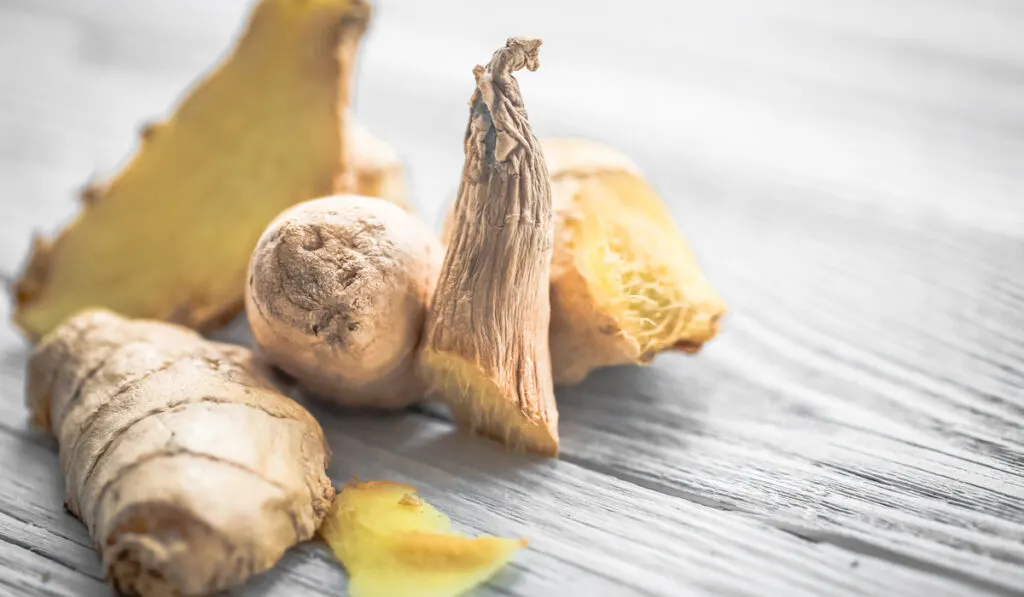
Using a knife, cut open the root and observe the color inside. If it is not shiny yellow, it is not fresh. If you see orange, brown, or black patches, dispose of the root immediately as it has gone completely bad.
Fresh ginger is beautiful to see as the inside color resembles that of the sun.
5. It Is Very Easy to Peel
You will not use so much effort to peel the skin off ginger that has gone bad. This is because the root can no longer hold its skin. Sometimes, you may find mold growing between the peel and the flesh. Well, if your ginger is easy to peel, you should examine its appearance and taste inside if it is still edible.
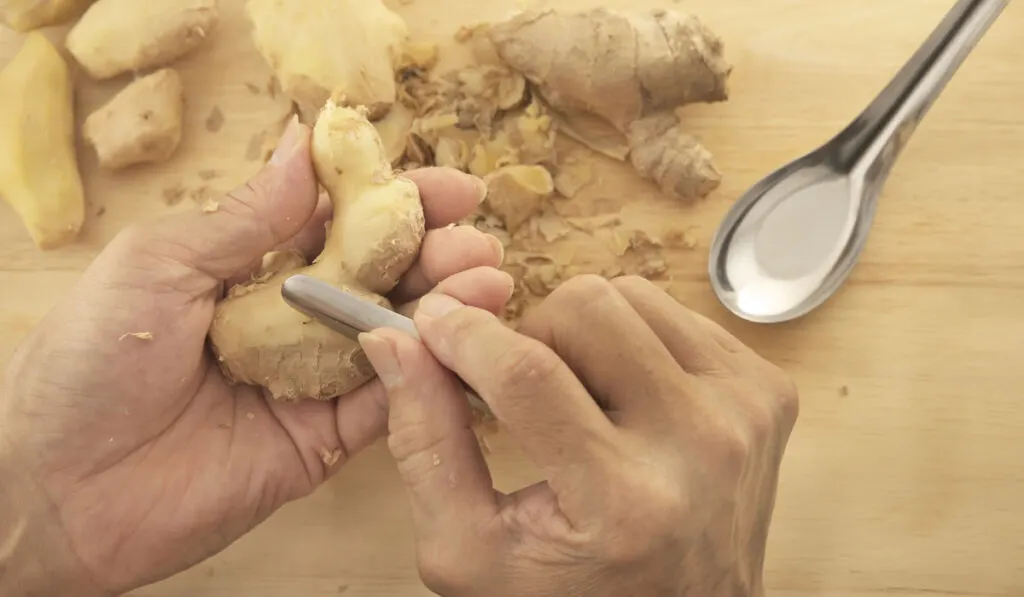
6. It Tastes Very Bad
You should not taste ginger that you feel is bad. However, if you see the need, taste it and see if it gives you that flavor-packed taste.
Ginger that has gone bad will taste sour and bitter. If this is the case with your ginger, dispose of it immediately and do not cook with it.
7. New Plants Growing from the Buds
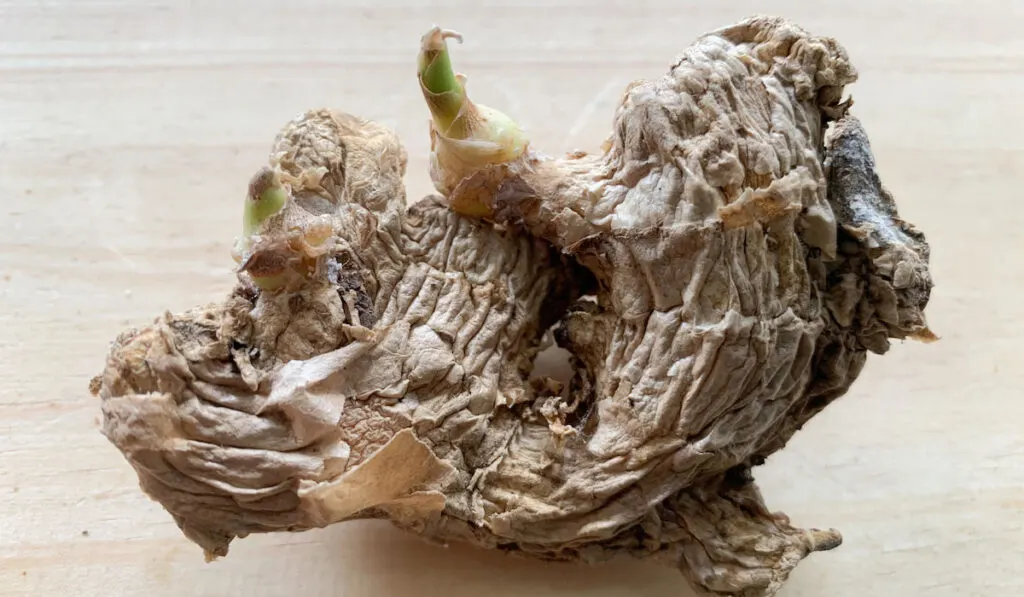
Plants growing from the buds do not necessarily make the root bad, but their presence is an indication that you have stored the ginger for too long and that it is becoming unsuitable for eating or cooking with. It is up to you to decide what you should do with the ginger. If you like, you can plant it.
Remember to enjoy your fresh ginger and dispose of the rotting ones.
Best Ways to Store Ginger
Do you have more ginger than you can consume at once? Store the remaining roots with these methods:
1. Store in an Open and Cool Room

The most popular and cheapest method of storing ginger roots is to keep them in an open room. The roots should not be exposed to direct sunlight, and they should stay off the ground if it gets too cold. The less humid the room is, the better.
However, keeping your ginger in a room with low humidity can give them a wrinkled appearance that is quite similar to what they look like when they get bad.
If you are storing your ginger with this method, make sure that you do not splash water on the roots as they can go bad quickly when wet.
2. Freeze the Ginger
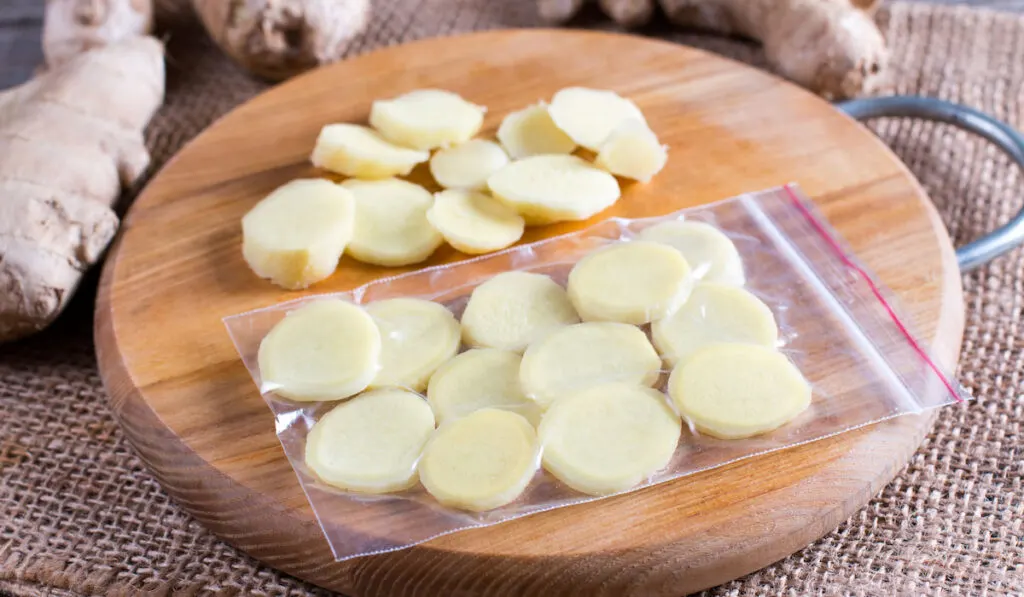
Can you freeze it? Sure, you can freeze ginger. The freezing method is highly effective and can help your roots to last more than six months. You just need to make sure that the temperature in the freezer stays at around 0°F. Also, do not remove the ginger from the freezer except if you really need to.
3. Refrigerate the Ginger
Refrigerating ginger is another good storage technique, but it is not as effective as freezing the roots. Ginger can last for weeks in a fridge. Please make use of them in four weeks so that they do not go bad in the fridge.
4. Grind and Dry the Ginger

This is more like the most effective way to store ginger. Well, it could also be the least effective way if you do not properly do it.
To store your ginger to last for up to two years, grind the roots until they turn into tiny bits and then dry them. You can use an oven (in low heat) to dry them. You can also air or sun dry them, just make sure that the humidity level is low.
When the ground roots are dry, you will know through the reduction of their weight and also how dry they will feel to the touch. Pour the powder into a clean and dry air-tight container and close the lid. Note that if you expose the ginger powder to microbes in the air or high humidity, it will go bad quickly.
5. Do Not Open the Pack
If your ginger roots came in a pack from the store, the best way to store them is to leave the pack as it is (i.e. do not open it). Leave the roots in the pack because when you open the pack, you expose them to humidity and perhaps microbes in the air and it can lead to decomposition.
When you leave your ginger roots in their pack, you can keep them in the fridge or freezer, and they will last for a significantly longer period than those that are already open. Do not leave the pack in a room with high temperature.
Now you can keep your ginger fresh for a longer period of time.
Related Questions and Answers
Got any extra questions? Here are some answers for you:
1. How Long Before Ginger Goes Bad?
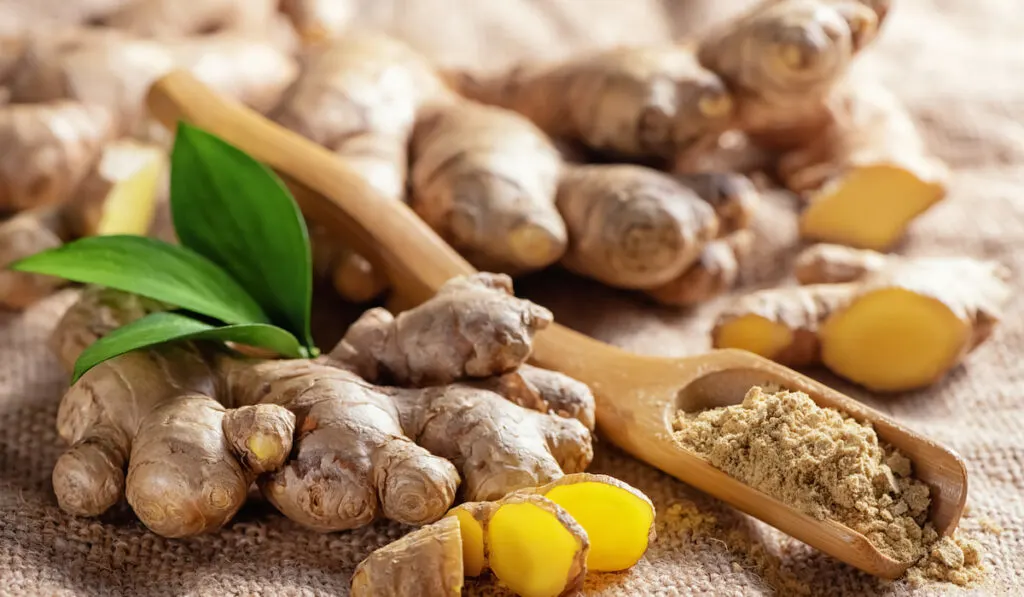
Ginger can stay fresh from a few days to up to two years depending on the way you store it. Here are some storage methods for ginger and for how long ginger can stay fresh:
- Frozen: Frozen ginger can last for up to three to six months. However, this depends on how often you open the pack and remove the ginger from the freezer. If the ginger stays in the freezer untouched, it can last for six months or more.
- Refrigerated: Ginger roots in the fridge can last for three to five weeks. Just ensure that you leave them untouched.
- Leave them open in a room: If you leave your ginger in an open room, it can last for one to three weeks depending on the temperature and humidity of the room.
- Ground and dry: Ginger powder can stay up to one or two years so long as you keep it in an airtight container.
If you want your ginger to last longer, find a suitable storage method.
2. Can You Eat Rotten Ginger?

Please do not eat rotten ginger because it can make you sick. The mold growing in the ginger signifies that it is rotting and no longer rich in nutrients. This means that instead of eating the root, you should dispose of it.
Do not keep any part of the root with mold as there can be fungi everywhere but mold grows in just a few parts.
What happens if you eat bad ginger? Sometimes, you may get lucky, and your stomach acid can digest the fungi.
However, it is mostly unsafe because the ginger that was once fresh will become toxic to you and can give you a bloated or upset stomach. You can also get other diseases depending on the type of fungi growing in the roots.
3. What Can You Use Ground Ginger For?

You can use ground ginger for anything you use ginger for.
Some people prefer ground ginger because they do not have to chew it while eating (i.e. many people hate the feeling of ginger in their mouth).
Also, ground and dry ginger has very little to no moisture, so it is packed with nutrients. This means that if you want to get the full benefit of ginger, you should cook using the powder form.
Aside from nutrients in ground ginger, this form of ginger also makes your dish sweeter and more flavorful.
Have you found the answer to your question?
Conclusion
Now you can enjoy the freshness of your ginger roots as you can now separate the bad from the good ones. Just in case you do not remember how to tell if ginger is bad, come back to this article and make use of the practical tips.
